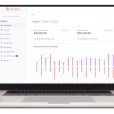Due to the recent coronavirus pandemic sweeping the globe, James Hall reports that the Australian dollar has just hit a record low of 55 US cents – its lowest value in 18 years. In addition, the emergency interest rate was reduced to 0.25 percent by the Reserve Bank of Australia (RBA), which was a pending decision previously discussed in an article by Sam Green, to lessen the financial impacts of coronavirus. Details of quantitative easing are soon to be released, which is hoped to encourage customer spending by adding more money into the economy.
Most major currencies have also been weakened due to the spread of the pandemic. This has resulted in a horrible risk environment for investors as more travel restrictions are put into place. FXCM describes how Forex is an AUD 8.45 trillion market, so these changes could have a huge impact on the Australian economy. To shed some light on this issue, here are some other factors that are currently impacting the value of the Australian dollar:
The Guardian reports how leading economists have forecasted that Australia is headed towards a recession in the first half of 2020, due to substantial losses in the stock market. According to the ratings agency Moody, Global recession risks have risen. The full extent of the economic costs will be unclear for some time. Fear of contagion will dampen consumer and business activity, and the longer it takes for households and businesses to resume normal activity, the greater the economic impact. In order to address this, Bloomberg describes how an AUD 17.6 billion-package unveiled by the Prime Minister is aimed to promote the welfare of apprentices and lower-income households while protecting the job security of individuals across Australia.
Also included in this measure is an AUD 1 billion fund to help tourism operators and some China-exposed exporters. Because Australia’s economy is export-oriented, it is heavily impacted by how the Chinese economy is struggling right now. As the source of the coronavirus, massive changes have led to disruptions in global supply chains as well as domestic industrial production. In addition, concern about China’s demand for key Australian imports like iron ore has weighed heavily on the value of the AUD. Looking forward, if the virus continues to impact financial sectors in China as well as the globe, it is likely that risk-sensitive assets like the Australian dollar may reduce the country’s prospects for growth. Additional financial stimulus from the RBA may be needed to alleviate this pressure.
On a positive note, ABC explores how Australia’s retail industry is being boosted by supermarkets, largely driven by attempts to stockpile resources. “The retail sector is likely to end up in a two-speed situation where food retailing, which largely comprises supermarkets, grocery stores, liquor retailing and other food retailing, experiences a strong lift in sales,” said Commonwealth Bank senior economist Gareth Aird. “However, other parts of the retail sector, particularly those that have a socialising aspect like eating out, will see a big contraction in activity.”
- The Coronavirus Vs. the Australian Dollar - March 25, 2020













Leave a Comment
You must be logged in to post a comment.